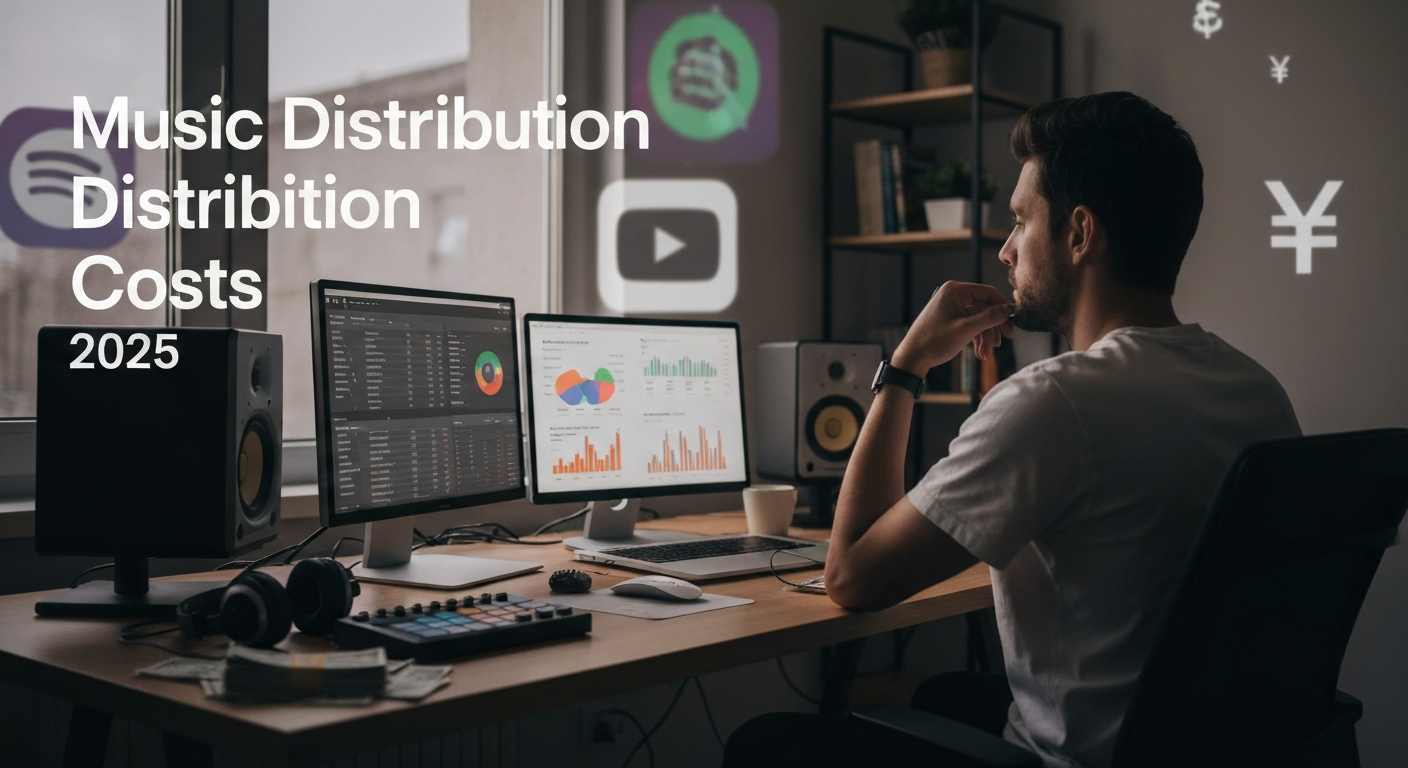Introduction
Understanding music royalties streaming is essential for independent artists in 2025. Streaming payouts are now the top income source for musicians worldwide, making it critical to know how royalty payments work and how to boost your earnings from every play. This guide explains what streaming royalties are, how platforms calculate payouts, common challenges, and easy, practical steps to earn more as a DIY artist.
🔍 What Are Streaming Music Royalties?
Music royalties streaming refers to the money an artist makes each time their song is played on platforms such as Spotify, Apple Music, Amazon Music, and YouTube Music. When a listener hits play, the streaming platform pays a small amount to the rights holder. Usually, this payment is split between two groups:
- Recording owners (who get “master royalties”)
- Songwriters or composers (who receive “publishing royalties”)
You do not need a record label to receive these royalties. With the right music distributor, you can upload your songs and get paid directly as an independent artist.
🧠 Why Streaming Royalties Matter
Consistent Income
Streaming generates money every day, even when you’re not actively promoting. If your song gains popularity, those payouts add up fast.
You’re in Control
Release music whenever you want and track your own income. Most distributors let you keep 85–100% of streaming royalties.
Better Revenue Shares Than Labels
Independent artists usually get a larger share of streaming royalties than those on a major label. Labels often take up to 85%, but DIY musicians keep most of their earnings.
Worldwide Reach
Streamed music pays royalties globally. Listeners in any country can trigger payouts to your account.
Instant Analytics
Most platforms offer dashboards that show stream counts and monthly income at a glance.
🎹 How Do Streaming Royalties Work?
1. Your Song Is Played
A fan streams your music; the platform records each play.
2. The Platform Collects Money
Money comes from ads, subscriptions, and partnerships. Part of this goes towards artist royalties.
3. Royalty Pool Split
The platform divides its earnings between everyone whose songs were streamed.
4. You Get Paid
Your music distributor sends the master recording royalties directly to you. Publishing royalties require registration with a music rights organization.
5. Withdraw Your Earnings
Artists usually get paid monthly. Transfer your earnings to your bank or PayPal.
📝 Streaming Royalty Rates – Comparison Table (2025)
| Platform | Avg. Rate/Stream | Pay Schedule | Extra Info |
|---|---|---|---|
| Spotify | $0.003–$0.005 | Monthly | Depends on region and account |
| Apple Music | $0.007–$0.01 | Monthly | Highest per-stream payout |
| Amazon Music | $0.008–$0.01 | Monthly | Competitive rates |
| YouTube Music | $0.001–$0.003 | Monthly | Ad streams pay less |
| Deezer | $0.004–$0.006 | Monthly | Pro-rata model |
| Tidal | $0.012–$0.02 | Monthly | Highest rates, user-centric |
| Pandora | $0.001–$0.002 | Monthly | Internet radio, lower payout |
Maximizing Your Streaming Royalties
Register for a Rights Organization
Sign up with organizations like ASCAP, BMI, or PRS to collect all your publishing royalties from around the world.
Release Everywhere
Upload your music to all major streaming platforms for maximum reach and income.
Promote Your Songs
Share links on social media, pitch to playlists, and connect with influencers. The more you promote, the more you earn.
Split Royalties Clearly
Use distributor dashboards to set up splits for collaborators and producers before release day.
Check Analytics Weekly
Look for patterns in your data. Find out which songs, countries, and playlists drive the most income. Focus your efforts there.
🔗 Related Internal Resources
- Independent Music Distribution Guide: Release Your Music Without a Label
- Playlist Promotion for Indie Musicians
- Music Monetization Strategies 2025
✅ Pros and Cons of Streaming Royalties
Pros
✔ Earn money passively from each stream
✔ Fast, direct payouts from distributors
✔ See real-time numbers and trends in your dashboard
✔ Indie artists keep a higher payout percentage
✔ Automatically splits with co-writers and producers
✔ Global revenue potential
Cons
❌ Need lots of streams for significant money
❌ Royalties may be complex to track if you’re self-managed
❌ Payment rules can change, so check platform updates
❌ Extra paperwork for publishing and analytics
❌ Payment times differ by platform
🌐 External Streaming Royalty Resources
- SoundCamps – Music Royalties Guide 2025
- BandLab Blog – Streaming Royalties
- iMusician – Global Streaming Payouts
- Ditto Music – Royalty Basics
- BMI – Royalties 101
💡 Final Thoughts
Knowing how music royalties streaming works helps independent musicians earn money for every stream. Start by registering your songs, distributing everywhere, and promoting regularly. With consistent work and a smart strategy, streaming can be your main source of income—and you don’t have to rely on a record label to succeed.



